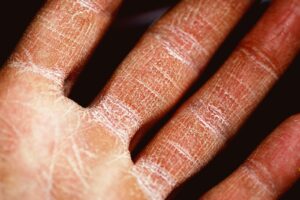Exposure to air pollution in childhood and adolescence is linked to an increased risk of mental illness from the age of 18, according to a new multidecade study published in the journal JAMA Open Network.
Researchers at Dukes University measured exposure to air pollutants – particularly nitrogen oxides (NOx) and fine particulate matter (PM2.5) around the study member’s homes, who ranged from the ages of 10 to 18 years.
They found that 84% of participants were exposed to PM2.5 levels above World Health Organisation (WHO) guidelines and 22% were exposed to nitrogen oxide pollution above guidelines.
The team then assessed the mental health of each participant when they reached age 18.
Symptoms associated with ten different psychiatric disorders were used to calculate a single measure of mental health, called the psychopathology factor, or ‘p-factor’ for short.
The researchers found that exposure to air pollution in childhood was linked to significantly higher rates of mental illness.
Air pollution was found to be a weaker risk factor than other better-known risks, such as family history, but they have highlighted that because harmful exposure to air pollution is so widespread around the world, outdoor air pollution could be a significant contributor to the global burden of psychiatric disease.
Aaron Reuben, the first author of the study said: ‘We have confirmed the identification of what is essentially a novel risk factor for most major forms of mental illness, one that is modifiable and that we can intervene on at the level of whole communities, cities, and or even countries.’
Helen Fisher, co-author of the study added: ‘Air pollution is likely a non-specific risk factor for mental illness writ large.
‘We don’t know what the mental health consequences are of very high air pollution exposures, but that is an important empirical question we are investigating further.’
Photo Credit – Pixabay

















The best example is here: Why the air in morning is fresh and dust free than the air that we experience during afternoon and evening? Obviously due to less human activities during night time than day time. During night time there is less emmission of dust particles and gases released by human activities. During the time the air becomes cool and less polluted so in morning we can experience fresh air but afterwards due to our activites the air gets polluted. If you see the differences of air in morning u can notice how human are spoiling the air quality day by day! SO LET’S SAVE AIR! EARTH IS OUR COMMON HOME! Our kids will live on this planet after us, let’s not leave our kids a unlive desert after us
Great full! article.. its very informative for me thanks for sharing